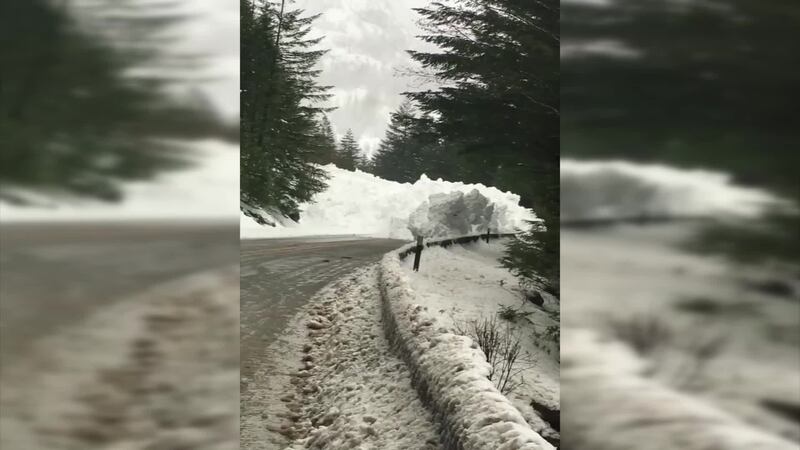For those who enjoy outdoor winter activities in Washington's mountains, emergency management leaders across the state share a reminder amid the peak of avalanche season: be safe and plan.
>> Download the KIRO 7 Weather app to get winter weather alerts around your home
Avalanches usually happen when wet snow rests on a hard field of snow, and most are triggered by humans. The best chance of survival in these conditions is prevention.
To help people understand these dangerous conditions before heading out, the Northwest Avalanche Center (NWAC) website nwac.us provides a free scale measuring risk.
Here's how to use NWAC:
Go to the homepage of NWAC and find the map at the top. The map breaks up Washington's mountains into sections. Hover over the section of the mountain that you are traveling and see a quick overview of where there are ranks of a danger scale of low to extreme.
For a more in-depth analysis of the area, click the area for the avalanche forecast page. NWAC will give you a "bottom line" brief of conditions.
>> Related: 1 killed, others injured in avalanche near Stampede Pass
For example, on Feb. 26, the "bottom line" section advised, "New snow and wind have created dangerous avalanche conditions. Avoid steep slopes were the wind is depositing snow near and above treeline. It may now be easier to trigger a dangerous avalanche."
You can also scroll down on the forecast page to see avalanche risks by elevation.
If you do go outdoors in snowy conditions, whether the avalanche risk is low or high, it's important to understand that rating levels are only guidelines and conditions in the mountains can change quickly.
With that being said, it's important to prepare with knowledge of what to do if you get caught in an avalanche. These are things to consider when going outside with deep snowpack.
How to spot instability:
- Overnight temperatures stay above freezing.
- Rainfall in the area along with higher than normal temperatures.
- (These two conditions can make snow unstable and a small rise in temperature can make slide conditions high.)
What to avoid:
- Stay off steep terrain at least a day after wet snowfall.
- Do not make any climbs where your incline is over 30 degrees.
- In winter, avoid the north sides of any slopes.
- In spring, avoid the south sides of any slopes.
>> Related: Watch an avalanche move on SR 20
What to do if you are faced with an avalanche:
- Do not try to outrun an avalanche (it can travel at 50 to 70 mph).
- Do not get under a rock ledge.
- Never climb into a cave.
- If you see one coming, shout to your party members.
- Close your mouth as to not choke on access water.
- Turn your back to the avalanche.
- Remove your pack and skis or snowshoes.
- If on a snowmobile, try to maneuver to the side of the slide.
- If caught in the avalanche, try to swim to the side.
- If you feel as if you are being pulled under, thrust up with your swimming motions.
- The closer you stay to the surface, the better your chances of survival.
- If at all possible, grab a tree or bush.
What to do if you can't stabilize yourself in an avalanche:
- You should curl into a fetal position protecting as much of your body as possible.
- Cup your hands over your face, allowing several inches of space between your hands and face.
- Be sure to hold your breath until the snow around you settles down.
- Move your head vigorously side to side.
- Also try moving your body side to side.
- Try to leave one hand above the snow.
- Never try to dig your way out unless you can detect light from the above snow.
- A person only has about 25 minutes of air under snow, so it's important to not waste it and energy if you can't see light.
- If you shouted to your party or are wearing an avalanche transceiver, help should be on its way.
Emergency management and outdoor safety advocates emphasize that in any avalanche situation that arises, remember the above steps and stay clam. It can save your life and the lives of others.
More news from KIRO 7
- Animal overpasses on I-90 will grant safe passage to Washington wildlife
- 1 killed, others injured in avalanche near Stampede Pass
- Couple prefers streets to Seattle's shelters
- Keep kratom legal or ban it? Battle lines drawn again amid plans for rally in Olympia
- Daylight saving time 2018: Seven things to know about 'springing forward'
Cox Media Group








